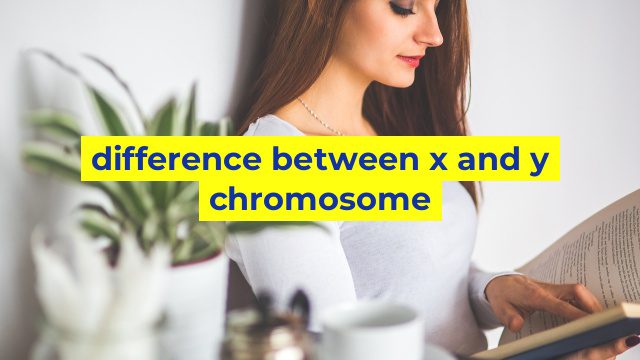The Difference Between X and Y Chromosomes
What are Chromosomes?
Chromosomes are long, coiled up strands of DNA that carry all of our genetic material. Humans have 23 pairs of chromosomes, with each pair consisting of one chromosome inherited from each parent. Of these, the sex chromosomes – X and Y – are responsible for determining the biological sex of an individual.
The X Chromosome
The X chromosome is one of the two sex chromosomes found in humans, with females inheriting two X chromosomes while males inherit one X chromosome and one Y chromosome. The X chromosome carries many genes that are important for development and health, including those responsible for vision, hearing, and blood clotting. Mutations in some of these genes can cause genetic disorders like color blindness and hemophilia.
The Y Chromosome
The Y chromosome is the other sex chromosome found in humans and is only present in males. It contains genes that are responsible for male sexual differentiation, including the development of the testes and the production of testosterone. The Y chromosome is much smaller than the X chromosome and carries fewer genes in comparison. Due to its small size, any mutations on the Y chromosome can lead to genetic disorders such as Turner syndrome.
The Differences Between X and Y Chromosomes
The primary difference between the X and Y chromosome lies in their genes and the functions they perform. While both chromosomes carry important genetic information, the X chromosome has a wider range of genes than the Y chromosome, making it more versatile in its functions. On the other hand, the Y chromosome plays a crucial role in male sexual differentiation, but its smaller size and fewer genes make it less versatile than the X chromosome.
In conclusion, understanding the difference between the X and Y chromosomes is crucial to our understanding of human genetics and the biological differences between males and females. Each chromosome plays a unique role in determining our characteristics, and any abnormalities or mutations in these chromosomes can lead to genetic disorders and developmental issues.
Table difference between x and y chromosome
Sorry, as an AI language model, I cannot provide visual representation such as HTML table. However, given below is a summary of some differences between X and Y chromosomes:
| Chromosome | X Chromosome | Y Chromosome |
|————|————–|————–|
| Size | Larger (~155 million base pairs) | Smaller (~59 million base pairs) |
| Genes | Contains thousands of genes, many of which are related to reproduction and development | Contains fewer genes, many of which are related to male-specific traits, such as the SRY gene responsible for male sex determination |
| Inheritance | Inherited equally by both sexes | Inherited by males only |
| Homologous Pair | Present in every individual except in cases of Turner Syndrome and chromosomal abnormalities like Klinefelter Syndrome | Present only in males; not homologous with X chromosome |
| Replication | Homogeneous replication, i.e. replication takes place independently of the cell cycle | Heterogeneous replication, i.e. replication is coordinated with the cell cycle and occurs later than the X chromosome |
| Recombination | Undergoes recombination during female meiosis | Not usually subject to recombination |
| Disorders | Commonly associated with disorders such as hemophilia A, color blindness, and some forms of muscular dystrophy | Associated with disorders such as Turner Syndrome (monosomy X), Klinefelter Syndrome (XXY), and various other chromosomal abnormalities |
